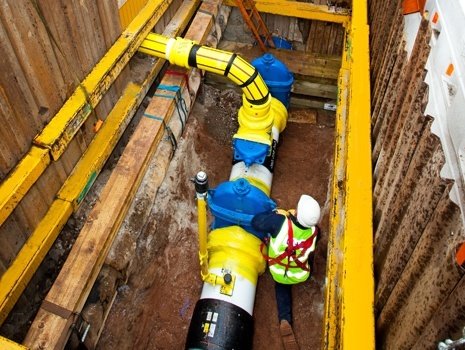 Trench excavations are a common sight in the construction industry. Most often used to facilitate the below-ground placement of wires, pipes and other modern facilities, they’re a practical solution made necessary by our increasing dependence upon modern technology.
Trench excavations are a common sight in the construction industry. Most often used to facilitate the below-ground placement of wires, pipes and other modern facilities, they’re a practical solution made necessary by our increasing dependence upon modern technology.
Since trenches are by definition taller than they are wide, it’s absolutely imperative that something be used to support each side of the excavated space. Not only will this help to ensure the project is carried out properly but, when trenches must be excavated above a certain height, it can also help to improve health and safety and, in some circumstances, prevent loss of life. This support is most commonly known as “trench shoring”.
Shoring VS Shielding
Shoring is often confused with shielding, but in the context of trenches these two terms refer to very different retention methods. The root of this difference lies in intent; whereas trench shielding is intended to protect workers in the event of a collapse, trench shoring aims to prevent such a collapse from happening in the first place. It’s not unusual, therefore, to find these two trench retention methods sitting side-by-side on the same project.
How to Shore Up Your Trench
A shoring trench can be achieved through various different methods. The two most common types utilise either aluminium or timber shores, which are installed using either hydraulic or pneumatic equipment.
Which material and installation equipment you use will most likely be dependent upon both your budget and project requirements, and on the type of soil you’re working with. However, it must be noted that a combination of aluminium shores and hydraulic installation tends to be preferred by the majority of construction crews, as this confers the most support whilst also increasing worker safety. This is achieved primarily because hydraulic installation can be both installed and removed without the need for anyone to enter the trench.
In some circumstances you may find that a shoring trench isn’t required. This may be because your trench is less than 5 foot in depth – anymore and shoring would become a necessary requirement – or it may be that the angle of excavation falls below the threshold for the particular soil type you are working with. If you have any doubts at all as to the legal requirements of your excavation project or its potential health-and-safety risks, it’s always best to get in touch with a professionally accredited excavation expert or other relevant industry authority.
Next, find out more about the different types of shoring methods.